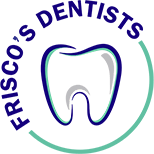Preventing Tooth Decay Through Dental Hygiene
Kids take the top spot for tooth decay mainly due to how much sugar they consume — followed by senior citizens. For the most part, the best way to prevent tooth decay and tooth loss is by keeping up with a dental hygiene routine that includes brushing 2-3 times per day, flossing, and visiting your dentist regularly.
Keep reading to learn how having the right routine and tools can help protect your teeth.
Dental Hygiene Tips for All Ages
Here are some general tips to get you started:
- Brush twice a day, for at least two minutes.
- Do not brush too hard, as it will erode your gums.
- Floss at least once a day.
- Get your teeth cleaned every six months.
- Add the right mouthwash into your routine to keep your mouth fresh.
Should I Use an Electric Toothbrush?
Electric toothbrushes have come a long way since their original incarnation in 1960, and some dentists are even recommending their patients use an electric toothbrush over regular toothbrushes. Many have found that patients who use them have cleaner teeth, minor plaque build-up (which results in shorter cleanings during check-ups), and healthier gums. But is this the right choice for you?
Electric Toothbrushes
Electric toothbrushes move 3,000 to 7,500 rotations per minute (RPM), which mimics the RPMs of the muscles in your arm and hand if they were manually brushing your teeth. In addition, the heads rotate or move back and forth to further cut down the amount of plaque build-up. The extra movement against the gums also massages and strengthens them — both of which will reduce the risk of gingivitis.
Sonic Toothbrushes
Sonic toothbrushes move nearly ten times as much, from 30,000 to 40,000 RPM. This larger number is really only the difference between the two types of power toothbrushes (aside from price), as they both have the same goal: remove plaque and improve gum health.
What’s the Difference?
So how important are these RPMs? Manual brushing typically averages 300 RPM, but only if you are brushing properly. If you brush for two minutes – the recommended time – then you’ve brushed your teeth with 600 strokes.
At the same time, an electric toothbrush will yield around 8,000 strokes and the sonic toothbrush will produce 70,000 strokes. Unless you plan to brush your teeth for several minutes to an hour, it’s nearly impossible to achieve the same number of strokes with manual brushing.
The Downside of Powered Brushes
The Food and Drug Administration (FDA) has reported that this is a real concern with the battery-powered Arm & Hammer Spinbrush (formerly known as the Crest Spinbrush). “It’s important that consumers know how to avoid the risks associated with using the Spinbrush,” said Shumaya Ali, M.P.H., a consumer safety officer at the FDA. “We’ve had reports in which parts of the toothbrush broke off during use and were released into the mouth with great speed, causing broken teeth and presenting a choking hazard.”
Since the FDA regulates all toothbrushes as medical devices, they want to push for safety precautions for all electric toothbrushes. They have found that the Spinbrushes have caused the following [reported] injuries:
- chipped or broken teeth;
- cuts to the mouth and gums;
- swallowing and choking on broken pieces; and
- injuries to the face and eyes.
The following Spinbrushes have been identified as culprits:
- Spinbrush ProClean
- Spinbrush ProClean Recharge
- Spinbrush Pro Whitening
- Spinbrush SONIC
- Spinbrush SONIC Recharge
- Spinbrush Swirl
- Spinbrush Classic Clean
- Spinbrush For Kids
- Spinbrush Replacement Heads
The Best Mouthwash for your Teeth, Gums, and Breath
When most people go shopping for a mouthwash, they tend to only focus on what will make their breath smell the best. However, mouthwash serves a much greater purpose — it’s the third step in your dental care routine (after brushing your teeth and flossing).
Choosing a Mouthwash
Mouthwashes tend to service a cosmetic or therapeutic purpose — or in some cases, both.
Cosmetic Mouthwashes
A cosmetic mouthwash will leave a pleasant taste in your mouth while hiding bad odors and reducing bad breath. These products are best if you’re primarily worried about bad breath and not preventing dental issues.
Therapeutic Mouthwashes
In contrast, a therapeutic mouthwash includes ingredients that can reduce the build-up of bacteria and can help prevent the following conditions:
- Dry mouth
- Gingivitis
- Receding gums
- Cavities
- Plaque build-up
Therapeutic mouthwashes are sold either over-the-counter or by prescription, while cosmetic mouthwashes tend to be sold over-the-counter. With so many options on the market, here is some consideration to help you decide what to look for:
Ingredients Best for Dental Hygiene
Some ingredients in many types of mouthwash are included to treat one or more common dental health concerns. When buying a new product, it’s a good idea to check for these ingredients:
- Fluoride: fights tooth decay and strengthens enamel.
- Cetylpyridinium chloride: eliminates bad breath and kills bacteria.
- Chlorhexidine: reduces plaque and controls gingivitis.
- Essential oils: have antifungal and antibacterial properties (such as eucalyptus, peppermint, thyme).
- Carbamide peroxide or hydrogen peroxide: whitens teeth.
ADA Seal of Approval
Check the mouthwash label for the ADA Seal of Acceptance. It means that it’s been tested for effectiveness. Not every mouthwash has it, including some with well-known names.
Recommended Brands
Now that we know what should be included in the mouthwash you use, here are some great options:
- Crest Pro-Health Multi-Protection
- Crest Pro-Health Advanced with Extra Whitening
- ACT Total Care Anticavity Fluoride
- ACT Dry Mouth
- Colgate Total Pro-Shield
- Listerine Cool Mint Antiseptic
Schedule Your Next Dental Cleaning Today
You may have the necessary dental tools to keep your mouth bright and while at home, but that doesn’t mean you can skip out on going to the dentist. Book your next appointment with our team by calling (972) 200-0656 or visiting us online.


